The South African Pig Welfare Code has been drawn up by farmers, vets, transporters, welfare organisations and abattoir operators.
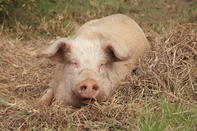
It is based on the so-called Five Freedoms principle as adopted by the Farm Animal Welfare Council, namely freedom from thirst, hunger and malnutrition, freedom from discomfort, freedom from pain, injury and disease, freedom to express normal behaviour and freedom from fear and distress.
Freedom from Thirst and Hunger
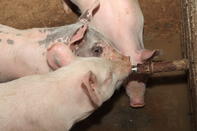
Freedom from Discomfort
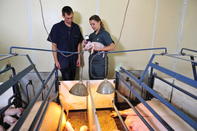
People who work with pigs should be able to perform their tasks with the minimum of distress to the pigs. On large farms, workers sometimes specialise in specific routines, for example, only dealing with farrowing pigs or the growers, whereas workers on smaller farms might be required to be all-rounders.
Any behaviour that may cause unnecessary discomfort is forbidden, with the code specifically referring to the kicking of pigs, the use of electric prodders, whips, metal rods, heavy sticks or other objects liable to injure or terrify pigs and the picking up of pigs by the ears, tail or forelegs. Pigs may not be tied up with wires, ropes or tethers, whether by the leg, neck or body.
The teeth of boars may not be broken, cut, sawn off, unless the procedure is performed by a veterinarian with appropriate anaesthesia. Piglets may also not be castrated after they are seven days old. The area where the pigs are kept should be kept clean to ensure animal comfort, minimise the risk of diseases spreading to other pigs or humans and to prevent pollution.
Freedom from Pain, Injury and Disease
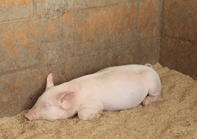
Daily inspections should be carried out to address problems before they get out of hand, such as tail biting and ear biting, injuries, illnesses, overcrowding, heat and cold stress.
Sick or bullied pigs might have to be isolated for treatment before being reintroduced into a group. According to the code, seriously injured or terminally sick animals should be immediately and humanely destroyed.
Freedom to Express Normal Behaviour
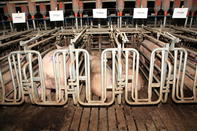
This is the most challenging freedom when it comes to intensive piggeries, especially relating to the use of sow crates or gestation stalls. The truth, however, is that farmers who do not use these technologies suffer huge losses, due to abortions and piglet losses. Besides this, the requirements of modern pigs are a lot different from their wild unimproved predecessors.
Based on the South African Pig Welfare Code, pigs kept outdoors should have access to appropriate shelters and enclosures, allowing a bare minimum of 5 square meters per pig. The pigs should not be left to roam for food, but have access to enough clean water and feed.
The area in which the pigs are produced should also be fenced-off and there should be sufficient handling facilities to allow routine procedures and the treatment of sick pigs.
With intensive production and extensive production systems, sow stalls may only be used for the first half of the sixteen-week pregnancy, during which time the sows can be individually fed and cared for, before spending the remainder of the gestation period in loose housing with other sows.
Farrowing crates should be large enough for a sow to stand and lie down comfortably with legs naturally extended. A safe creep area with bedding and provision for warmth for piglets must be provided in the farrowing pen.
Housing, crates and pens should have non-slip flooring, be well drained, cleaned regularly and offer adequate shelter from direct sunlight winds and foul weather. A minimum space of 0,85 square meters is required per 100kg of live mass to prevent overcrowding.
By Glenneis Kriel